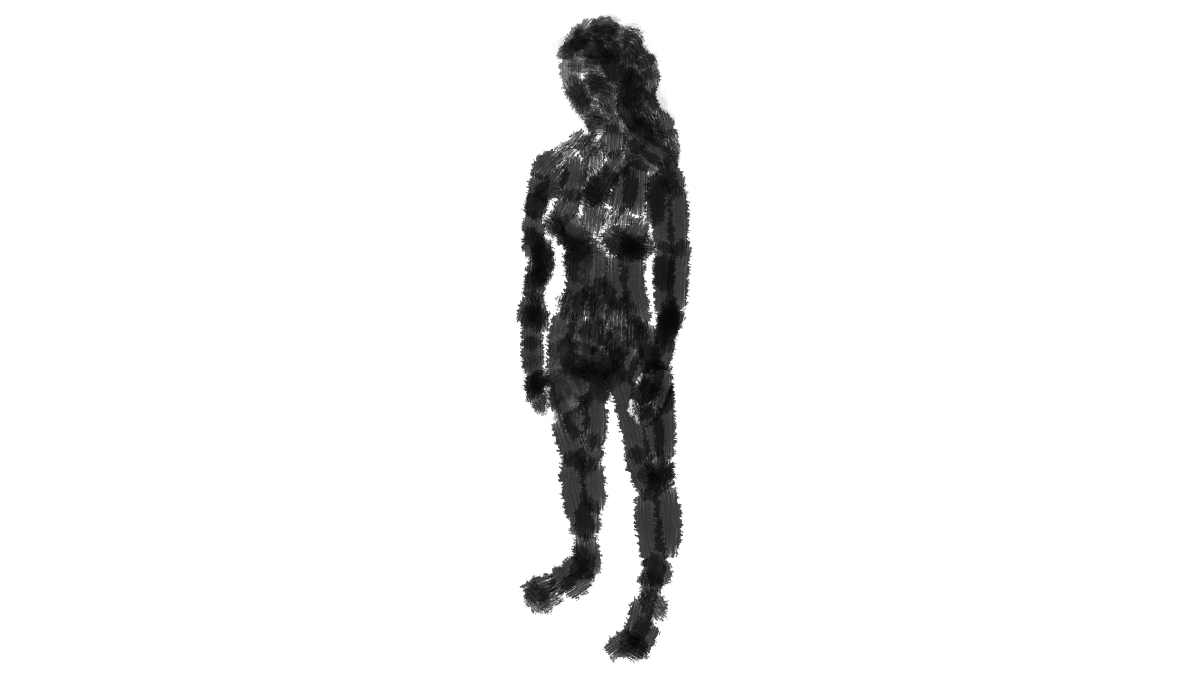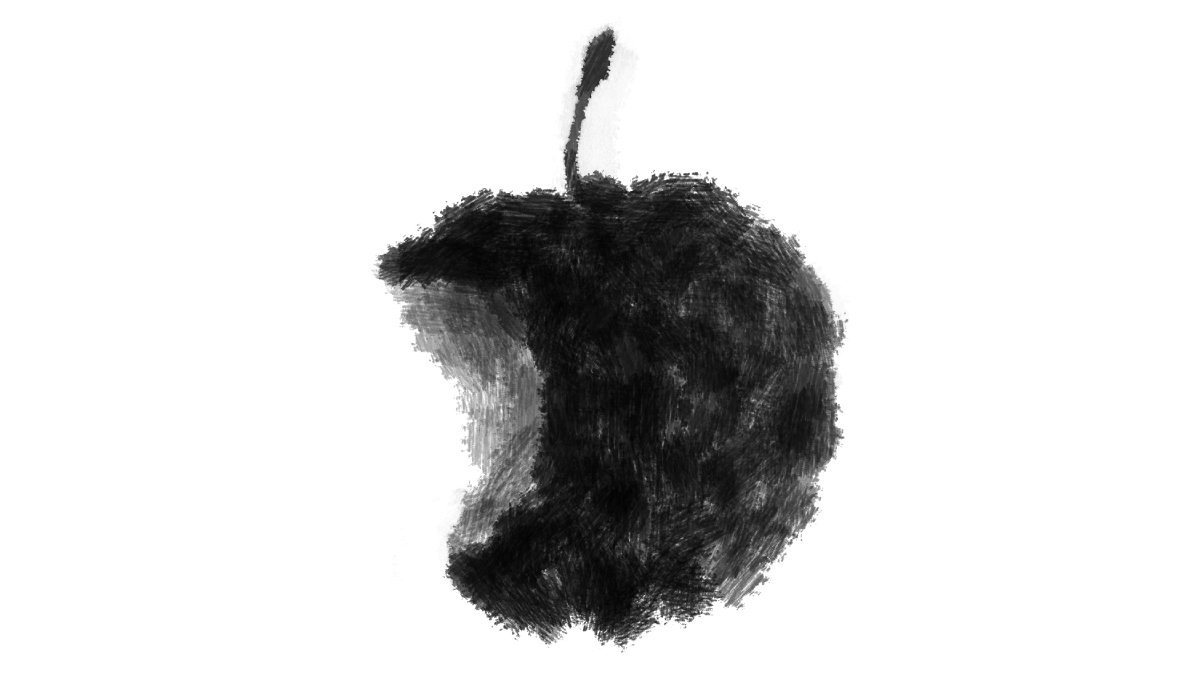 Alex Patterson
Alex PattersonAt 16, Hannah Kinsella was admitted to the University of Alberta.
Her application package: a frail 5’8″ frame weighing 111 pounds, a daily intake of 500 calories, a palpitating heart, and a belief that she needed to be smaller. She wasn’t becoming an undergraduate student; she was a diagnosed anorexic entering the eating disorder program in the Clinical Sciences building.
In Grade 10, Kinsella’s tall, “gangly” frame began to fill out with the onset of puberty — having always identified with being slim, she wasn’t comfortable with her new curves. Her peers noticed, and they teased her: “You’re going to have to puke if you want to be a model,” they’d say.
She didn’t puke. Instead, she exercised more and ate less — 500 calories a day, the equivalent of five overripe bananas, or shrimp stir-fry from Edo Japan, or a foot-long vegetarian sandwich at Subway. To stay on track, Kinsella journaled her daily caloric intake, weight, and measured the size of her arms, thighs, and neck. If measurements were lower than what was written the day before, she’d feel a high that propelled her into further starvation. If they were higher, she ate less to compensate.
By November of Grade 11, Kinsella was in and out of therapy. Her refusal to eat was a safety blanket, and she was proud of it. To her, not eating was a badge of self-control. Meanwhile, her body was shutting down. She hadn’t menstruated for nine months, she lost feeling in her extremities regularly, and she was always cold and tired. Her social life grew quieter and quieter, as going out often meant eating food with friends.
“I looked like a skeleton,” Kinsella says.
With a mortality rate of 10 per cent (the equivalent of meningitis and tetanus), anorexia nervosa is the most fatal mental illness in the world. People with anorexia restrict food to the point of starvation, heightening their risk of heart failure. Those tend to resist treatment, believing that they don’t really need it. As they starve, they’ll lose bone density, muscle mass, and will grow a fine layer of hair all over the body to keep warm.
Bulimia nervosa is less fatal and less detectable than anorexia. Those with the disorder usually maintain a normal to slightly higher-than-normal weight. In private, they’ll down large amounts of food and then compensate by vomiting, taking laxatives, or exercising (causing their faces to puff up). Most of the disorder’s effects are internal, including esophagus tears, tooth decay, and electrolyte imbalances. According to the Eating Disorder Support Network of Alberta, one in four college-aged women binge and purge to control weight. Bulemics tend to alarm themselves with the lack of control in their behaviours, and are usually more receptive to treatment.
Between 0.9 and 2.2 per cent of the population are clinically anorexic, and between 0.3 and 9.4 per cent of the population are clinically bulimic.
These metrics don’t include disordered eaters, or those who display disordered eating without qualifying for a diagnosis.
Eating disorders are conditions of vastly negative self-criticism and self-perception. Everyone self-criticizes, but for some with the right combination of genetics, physiology, psychological development, and social environment, self-criticism becomes a personality trait, says U of A psychologist William Whelton.
“Just as each of us has relationships with other people, each one of us has a relationship with ourselves,” Whelton explains. “And, just as we have beliefs and attitudes towards other people, we have beliefs and attitudes towards ourselves.”
Disordered eating usually emerges around puberty, when girls typically gain 40 per cent in weight and increase their proportion of body fat from 8 to 22 per cent. These physical changes happen against a social “background noise” of objectification and sexualization of women, Whelton says. Certain personality traits further the chance of disordered eating: perfectionism, obsessive-compulsiveness, narcissism, and neuroticism, and affinities for independence, control, and achievement.
For self-critics, irrational beliefs double as comforting self-defense mechanisms that motivate individuals to fix their faults.
“Self-critics, in a perverse sort of way, are trying to take care of themselves,” Whelton says. “But it just doesn’t work … If you really look at what underlies somebody’s self-criticism, it’s fear. It’s the fear that you won’t succeed, you won’t get what you want, and no one will like you unless you’re criticizing yourself.”
As disordered eaters take more comfort in their negative self-evaluations, they become more obsessed with perfection, and more afraid of failure. The university, being a place of constant academic and aesthetic evaluation, is a “tough place for a perfectionist,” Whelton says.

Sally Willis, the director of the Nutrition Education Centre of the University of British Columbia-Okanagan Campus (UBCO), estimates that one of five female university students are disordered eaters (exact statistics aren’t available, as most people with eating problems don’t report). Like Whelton, she sees universities as “breeding grounds” for destructive eating habits due to their hypercompetitive, stressful environments and their large availability of cheap, non-nutritious food. Social media, Willis adds, is also a growing factor.
UBCO’s solution to disordered eating on campus is twofold. First, it aims to raise awareness. Second, it provides a nutrition centre to help students with eating behaviours, stress management, exercise, general nutrition, and weight management. UBCO is home to roughly 8,000 students, and all have access to the centre.
The U of A doesn’t have any specific units for treating disordered eating in students, but they can book appointments with a nutritionist at the University Health Centre. They can also visit Counselling and Clinical Services to speak with a psychologist.
If one in five female students have disordered eating, there are roughly 3,600 females on at the U of A who restrict, binge, or purge.
When Kinsella was admitted as an outpatient to the U of A hospital’s eating disorder program, she saw inpatients who were physically shutting down due to severe starvation.
“They looked like they just came out of an Auschwitz concentration camp,” she says. “They were so emaciated, it was scary. I almost cried.”
Healing is possible, but difficult. Dr. Lara Ostolosky, a psychiatrist in the U of A’s eating disorder unit, says this is because eating disorders are egosyntonic, meaning that they’re agreeable to the patient. People will come in and out of the unit for years before finally deciding to commit to treatment.
Daily treatment in Dr. Ostolosky’s unit starts with a therapy session at 7 a.m. At 8:15 a.m., patients are given medications and a dietitian-designed breakfast. Supervision follows, to make sure patients don’t purge, and then they attend therapy (or school, if they’re a K-12 student). Lunch is served at noon, followed by more therapy. At 5:00 p.m. is dinner, and at 8 p.m. is evening snack. Patients are closely watched throughout the day.
Unit staff are tasked with not getting frustrated. They deal with patients who might, for example, get upset and slam the door as they leave the meal room. But while young people may start out as closed-off, helping them “blossom” into a normal life makes the work worth it, Ostolosky says.
“You have to push the behaviour aside and see the person,” she says.
Kinsella resisted treatment at first — upon meeting with the eating disorder program’s head psychologist, she told him to “fuck off.” Entering the outpatient program was an achievement of sorts — but also a failure, as she wasn’t skinny enough to be an inpatient.
“I was a brat,” she says. “I was angry, I was hungry. At the same time, when I was in the unit I felt really gross about myself, like they were all thinking I was fat, or I was a failure, because I didn’t get to my goal weight.”
Kinsella was paired with a therapist (a “cool little Argentinian man”) to work on coping strategies, and a “really sassy” nutritionist who enforced a daily 2,400-calorie quota. Meeting the quota meant eating foods like cheese, or a whole chicken breast instead of half. Kinsella’s mom picked her up at school every lunch to make sure she would eat. Gaining weight back was physically painful.
“I lived on lettuce and salad dressing for over a year,” Kinsella said. “Your stomach kind of shrinks.”
After eight months of treatment, Kinsella was released from the U of A hospital’s eating disorder program in June of her Grade 11. She then graduated high school and began her first year at the U of A’s Faculty of Arts. But in the new, competitive environment, the cycle started again.
“I might have been healthy by weight standards, but mentally I didn’t choose to be better,” Kinsella says.
By the end of Kinsella’s second year, she felt “trapped,” and she was struggling again. She ate, but only snacks, and only after 1 p.m. She’d drink coffee partially to boost her metabolism, partially to distract herself from feeling hungry. She says it was normal to feel dizzy.
“I remember thinking that I could enjoy food when I was 80 in a seniors’ home,” she says. “That’s not okay. You should be able to enjoy food.”
Kinsella contacted her therapist and re-entered the eating disorder program, determined to get better. Her first time, she learned how to eat properly. Her second time, she wanted to learn how to be happy with her body. Kinsella started journaling, this time to record things that made her happy. She shifted her focus from her appearance to her personality traits.
“I wanted to be confident and happy,” she says. “I wanted to actually know what that’s like.”

General therapy for the self-critic involves lowering one’s self-critical voice (Whelton says it’s impossible to eliminate completely) and raising one’s self-compassionate voice. Interestingly, compassion for others tends to be much easier for harsh self-critics to feel. Healing involves directing compassion inward.
For adolescents, other experts like Amanda Stillar — currently completing her PhD in counselling at the U of A — focus on emotion-focused family therapy. Working with the entire family allows parents to become their children’s behaviour coaches. Untrained parents sometimes accommodate their child’s maladaptive behaviours under the pretense that a “sick child is better than a dead child,” she says.
Stillar adds that non-diagnosed disordered eaters away from home and in university can engage their own families over social media. Going to community resources is another good substitute for family support.
For U of A students, these resources would include the Eating Disorder Support Network of Alberta, and services on campus, where psychologists like Agatha Beschell of Counselling and Clinical Services work with students. Beschell helps students follow treatment plans to establish healthy eating patterns (reducing binging behaviour, for example) and regulate emotions.
It’s “easier said than done,” Beschell says, but if a person puts time into treatment, it’s very possible to recover. On average, treatment takes between four and six months.
Kinsella is now in her fourth year of university.
Finally recovering from her eating disorder felt like a breakup, she says or losing a security blanket. When the rational part of her brain was silenced by hunger, anorexia was always there to assure her that she was doing the right thing by starving herself.
She still has days where she feels insecure. When she’s stressed out, she tends to experience body dysmorphia — she’ll feel a double chin, or a “doughy” stomach. But she stays connected to her body through yoga. She delivers talks at schools about her experience with anorexia.
“I can’t say I’m this confident, non-insecure person because that’s irrational,” she says. “But it’s nice to not be as insecure and need that control. The feelings are there, but they don’t dictate what I’m going to do.”




